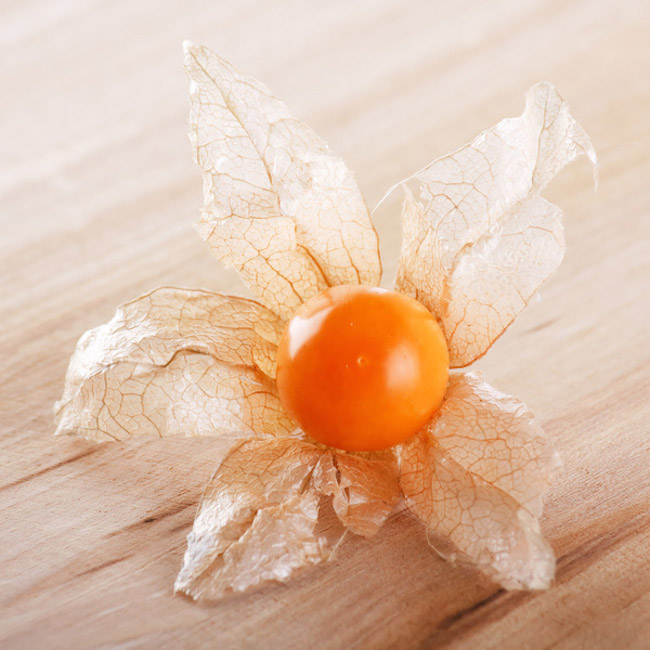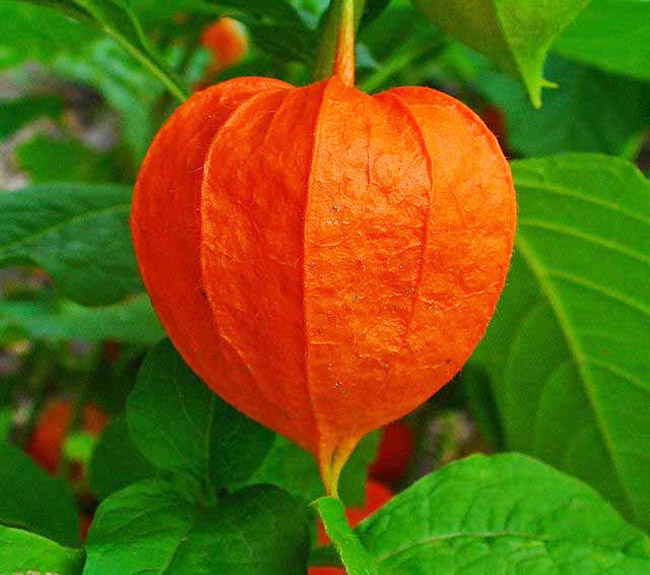Health Benefits of Rarest and Exotic fruits of the world

 Physalis
Physalis
Physalis
is a genus of plants in the nightshade family (Solanaceae), native to warm
temperate and subtropical regions of the world. All but one species are native
to the New World, and most species occur in Mexico in particular. At least 46
species are endemic to the country. The genus is characterised by the small
orange fruit similar in size, shape and structure to a small tomato, but partly
or fully enclosed in a large papery husk derived from the calyx. Many Physalis
species are called groundcherries. One name for Physalis peruviana is Cape
gooseberry, not to be confused with the true gooseberries, which are of the
genus Ribes in the family Grossulariaceae.
They are herbaceous plants growing to 0.4 to 3 m tall, similar to the common
tomato, a plant of the same family, but usually with a stiffer, more upright
stem. They can be either annual or perennial. Most require full sun and fairly
warm to hot temperatures. Some species are sensitive to frost, but others, such
as the Chinese lantern tolerate severe cold when dormant in winter.
Not all Physalis species bear edible fruit. Select species are cultivated for
their edible fruit, however; the typical Physalis fruit is similar to a firm
tomato in texture, and like strawberries or pineapple in flavor, with a mild
acidity. Some species, such as the Cape gooseberry and tomatillo have been bred
into many cultivars with varying flavors, from tart to sweet to savory. Physalis
fruit are rich in cryptoxanthin.
The fruit can be used like the tomato. Once extracted from its husk, it can be
eaten raw and used in salads. Some varieties are added to desserts, used as
flavoring, made into fruit preserves, or dried and used like raisins. They
contain pectin and can be used in pie filling.
The Cape gooseberry is native to the Americas, but is commonly in many
subtropical areas. Its use in South Africa near the Cape of Good Hope inspired
its common name. Other species of commercial importance include the tomatillo.
Some nations, such as Colombia, have a significant economic trade in Physalis
fruit. Some species are grown as ornamental plants. For example, the hardy
Physalis alkekengi is popular for its large, bright orange to red husks.
In Chinese medicine, Physalis species are used as remedies for such conditions
as abscesses, coughs, fevers, and sore throat. Smooth groundcherry is classified
as a hallucinogenic plant, and its cultivation for other than ornamental
purposes is outlawed in the US state of Louisiana under State Act 159.

Health Benefits of Physalis
Physalis is a kind of drug nourishing crops. The fruit consists of two times the
quantity of Vitamin C as that in lemons and appears just like a blonde-red
cherry tomato with a more gratifying flavor compared to the tomatillo. Apart
from leaves, fruits, stems and also roots also provide recovery power. This
particular plant is definitely a 12-monthly shrub vegetation, that is regarded
as weeds.
1. Influenza and Laryngitis
Physalis Plant (all parts) which has been cut into bits about the size of 3-4
cm, dried, after that wrapped to help keep damp longer. Then take about 9-15
grams of boiling water, the water was drunk. Do just as much as 3 times every
day, or even as required and / or recipe instructions.
2. Diabetes mellitus (diabetes)
Just like number one. Yet in the boil, boil along with 2 cups of water, till
leftover 1 glass. Right after chilling filtered, drinks at once each morning.
The waste could be boiled once more, to be drunk within the afternoon.
3. Lung disease
Comparable to number one. Whenever boiling, utilize 3-5 cups of water. After
boiling, let cool and also strain it, drink water 3 times daily.
4. Weight loss properties
One 100 gram (3.5 ounce) serving of ground cherries gives us just 53 calories
along with a single gram of fat. For that reason, you are able to readily add as
numerous of these cherries in your diet without having to worry regarding weight
gain. Also, like several fruits, they will include respectable amounts of fiber
that makes you really feel fuller and much less willing to overindulge.
5. Rich in vitamin A
100 grams of ground cherries consist of 720 international units of vitamin A,
that is 14 % of the adult's suggested every day consumption. Vitamin A is
required for sustaining good eyesight and also skin health, improving immune
function, and also gene transcription. Additionally it is an anti-oxidant, which
means that it may neutralize the harmful outcomes of free-radicals, therefore
shielding us from cancer and also degenerative diseases just like macular
degeneration, rheumatoid arthritis, as well as cystic fibrosis.
6. Good source of vitamin C
100 grams of ground cherries impart us with 11 milligrams of vitamin C, that is
18 % of the RDI. Vitamin C is really a water-soluble nutrient that is required
for collagen manufacturing (that, in return, accelerates the body's capability
to restore wounds), reducing blood pressure level, making certain the
appropriate dilation of bloodstream (therefore safeguarding us from diseases
just like atherosclerosis as well as congestive heart failure), battling
cataracts, and also improving the defense mechanisms. Just like vitamin A,
vitamin C can also be an anti-oxidant which safeguards us from free radical
injury.
7. B-vitamin complex
100 grams of ground cherries consist of different quantities of particular
B-vitamins, which includes thiamine (0.110 milligrams, or 7.3 percent of the RDI),
riboflavin (0.040 milligrams, or even 2 % of the RDI), and niacin (2.800
milligrams, or 14 % of our RDI). Even though the B-vitamins act as a group, they
do have got particular reasons: Thiamine is required to keep a healthy central
nervous system (and is also therefore nicknamed the 'anti-stress' vitamin),
riboflavin is required to facilitate cell growth and also repair, and niacin is
required for DNA repair and maintaining levels of energy.
